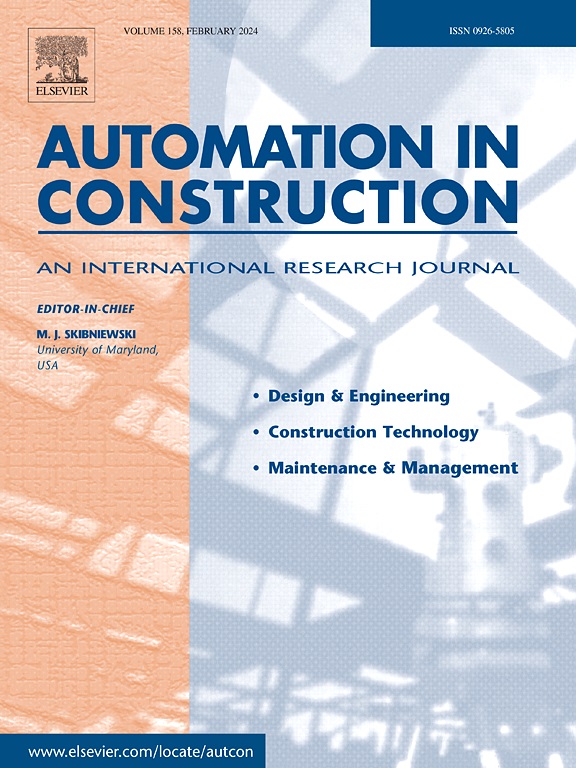Excavation trajectory planning for unmanned mining electric shovel using B-spline curves and point-by-point incremental strategy under uncertainty
IF 9.6
1区 工程技术
Q1 CONSTRUCTION & BUILDING TECHNOLOGY
引用次数: 0
Abstract
The intelligence of electric shovels plays a critical role in improving excavation efficiency and safety. A key challenge in intelligent excavation is generating an optimal excavation trajectory while considering material uncertainty. Therefore, an Unmanned mining Electric Shovel Trajectory Planning method based on the Point-by-point Incremental B-spline Curve under Uncertainty (UESTP-PIBCU) is proposed in this paper. The method establishes the dynamic model of the electric shovel working mechanism and the excavation resistance model, analyzes excavation resistance uncertainty parameters using interval possibility theory. Then, a multi-objective trajectory planning model considering excavation resistance uncertainty is established, and the optimal excavation trajectory is obtained through optimization. Experimental results demonstrate that UESTP-PIBCU outperforms commonly used methods in excavation efficiency and dipper fill ratio, and operational efficiency is effectively improved. Future research will explore the impact of multi-source uncertainties on excavation trajectories, to enhance the reliability and robustness of the intelligent electric shovel system.
不确定条件下基于b样条曲线和逐点增量策略的无人矿用电动铲开挖轨迹规划
电铲的智能化对提高开挖效率和安全性起着至关重要的作用。智能开挖面临的一个关键挑战是在考虑材料不确定性的情况下生成最优开挖轨迹。为此,本文提出了一种基于不确定条件下逐点增量b样条曲线(UESTP-PIBCU)的无人采矿电动铲轨迹规划方法。该方法建立了电铲工作机构的动力学模型和开挖阻力模型,利用区间可能性理论分析了开挖阻力的不确定性参数。然后,建立了考虑开挖阻力不确定性的多目标轨迹规划模型,通过优化得到了最优开挖轨迹。实验结果表明,UESTP-PIBCU方法在开挖效率和铲斗填充率方面均优于常用方法,有效提高了作业效率。未来的研究将探索多源不确定性对挖掘轨迹的影响,以提高智能电动铲系统的可靠性和鲁棒性。
本文章由计算机程序翻译,如有差异,请以英文原文为准。
求助全文
约1分钟内获得全文
求助全文
来源期刊

Automation in Construction
工程技术-工程:土木
CiteScore
19.20
自引率
16.50%
发文量
563
审稿时长
8.5 months
期刊介绍:
Automation in Construction is an international journal that focuses on publishing original research papers related to the use of Information Technologies in various aspects of the construction industry. The journal covers topics such as design, engineering, construction technologies, and the maintenance and management of constructed facilities.
The scope of Automation in Construction is extensive and covers all stages of the construction life cycle. This includes initial planning and design, construction of the facility, operation and maintenance, as well as the eventual dismantling and recycling of buildings and engineering structures.
 求助内容:
求助内容: 应助结果提醒方式:
应助结果提醒方式:


